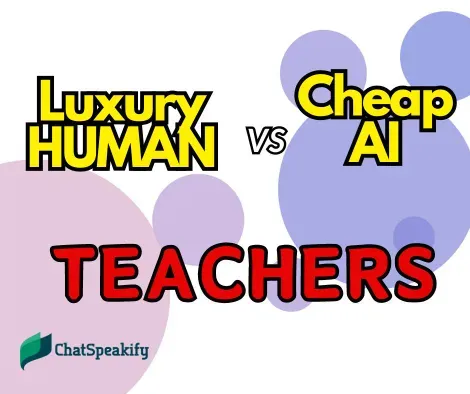As technology continues to transform various sectors, the field of education is undergoing a profound shift. One of the most prominent discussions today revolves around comparing traditional human teachers with the emerging trend of AI teachers. Both approaches offer distinct advantages and face unique challenges. This article explores the roles of luxury human teachers and cost-effective AI teachers in shaping the future of education.
The Value of Human Teachers
Human teachers have long been the cornerstone of education, celebrated for their ability to deliver personalized instruction, emotional support, and mentorship. Their intrinsic value lies in their capacity to adapt their teaching methods to meet the diverse needs of their students, fostering a nurturing learning environment. Human teachers can also perceive and respond to nonverbal cues, providing empathy and encouragement that machines currently cannot replicate.
Advantages of Human Teachers:
Emotional Intelligence: Human teachers excel in building meaningful relationships with students. Their understanding and encouragement go beyond academic learning, providing emotional support that fosters student well-being.
Adaptability: Teachers can tailor their methods to accommodate different learning styles and needs, adjusting their approach to fit the individual pace and preferences of students.
Mentorship: Beyond academics, teachers play a crucial role in guiding students’ personal growth and development, shaping their behavior and future ambitions.
However, this comes at a significant financial cost. High-quality education often involves a substantial investment, making it inaccessible for many. This is where AI teachers offer a promising solution.
The Rise of AI Teachers
AI teachers are increasingly being integrated into educational systems as a cost-effective alternative. They present numerous benefits, including the ability to provide consistent, scalable, and accessible education to a broad audience.
Advantages of AI Teachers:
Cost Effectiveness: AI-powered educational platforms deliver high-quality instruction at a fraction of the cost of traditional schooling. Recent advancements, such as the GPT-4o Mini , highlight a significant step forward in developing more cost-efficient intelligence that maintains high educational standards.
Accessibility: AI teachers can reach remote or underserved areas where human teachers are scarce, ensuring that education is available to students regardless of their location.
Consistency: AI ensures uniformity in curriculum delivery across different institutions, minimizing variations that may arise from individual teachers’ experiences and interpretations.
Despite these advantages, AI teachers have limitations. They lack the emotional intelligence and nuanced understanding that human teachers bring to the classroom. AI can struggle with the complexities of human behavior and the need for emotional support and mentorship.
Striking a Balance
The future of education likely lies in a hybrid model that leverages the strengths of both human and AI teachers. AI can handle repetitive and scalable aspects of education, such as delivering lectures, grading, and providing instant feedback. This allows human teachers to focus on areas where they excel, such as fostering critical thinking, creativity, and emotional development.
Hybrid Model Advantages:
Enhanced Learning Experience: By combining AI’s efficiency with human empathy, we can offer a richer learning experience. Technologies like EductiveAI exemplify this hybrid approach, merging AI’s capabilities with human insight to enhance educational outcomes.
Resource Optimization: AI can manage administrative tasks and routine activities, enabling human teachers to dedicate more time to personalized instruction and student engagement.
Expanded Access with Quality: This model not only improves educational quality but also extends access to a larger audience, making high-quality education more widely available.
Conclusion
Ultimately, the goal is not to choose between expensive human teachers and affordable AI teachers, but to integrate both to leverage their respective strengths. Human teachers offer emotional intelligence and adaptability, while AI teachers provide cost-effective, round-the-clock educational support. By creating an educational system that combines these elements, we can ensure high-quality education for all and foster a brighter future.
